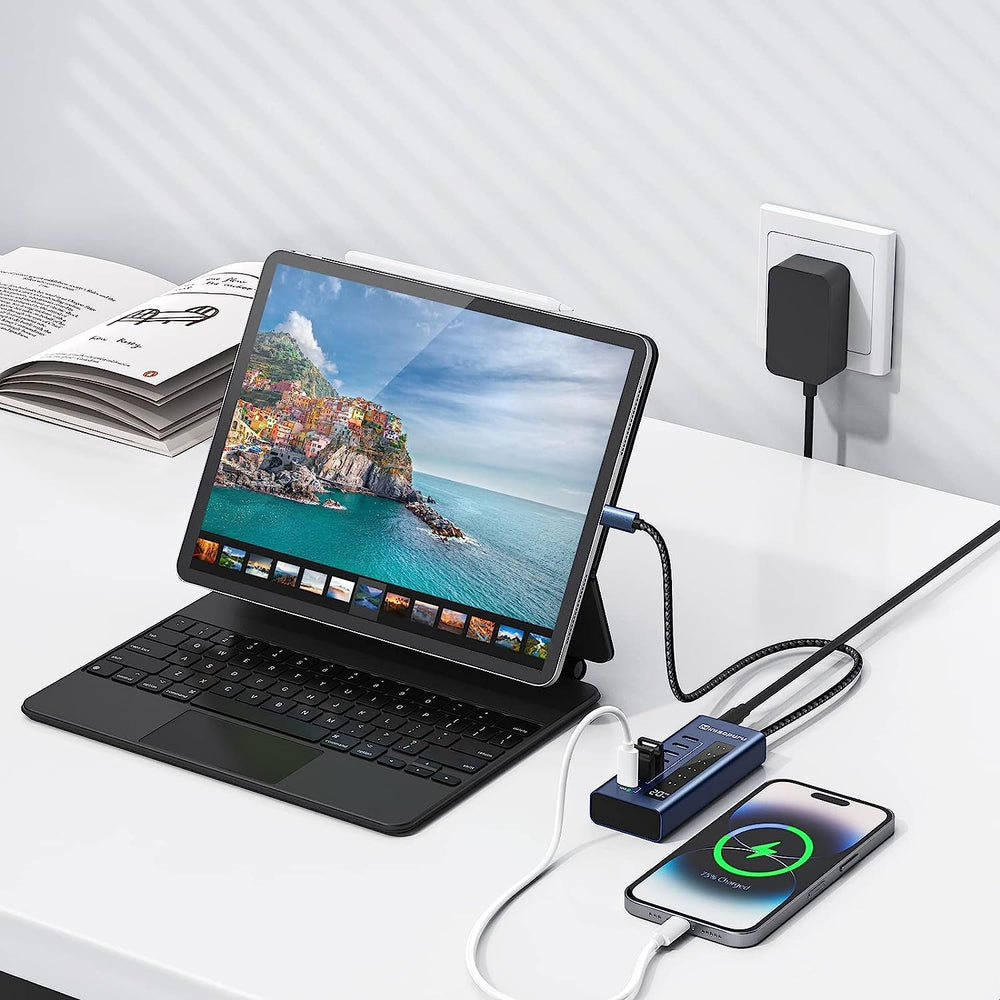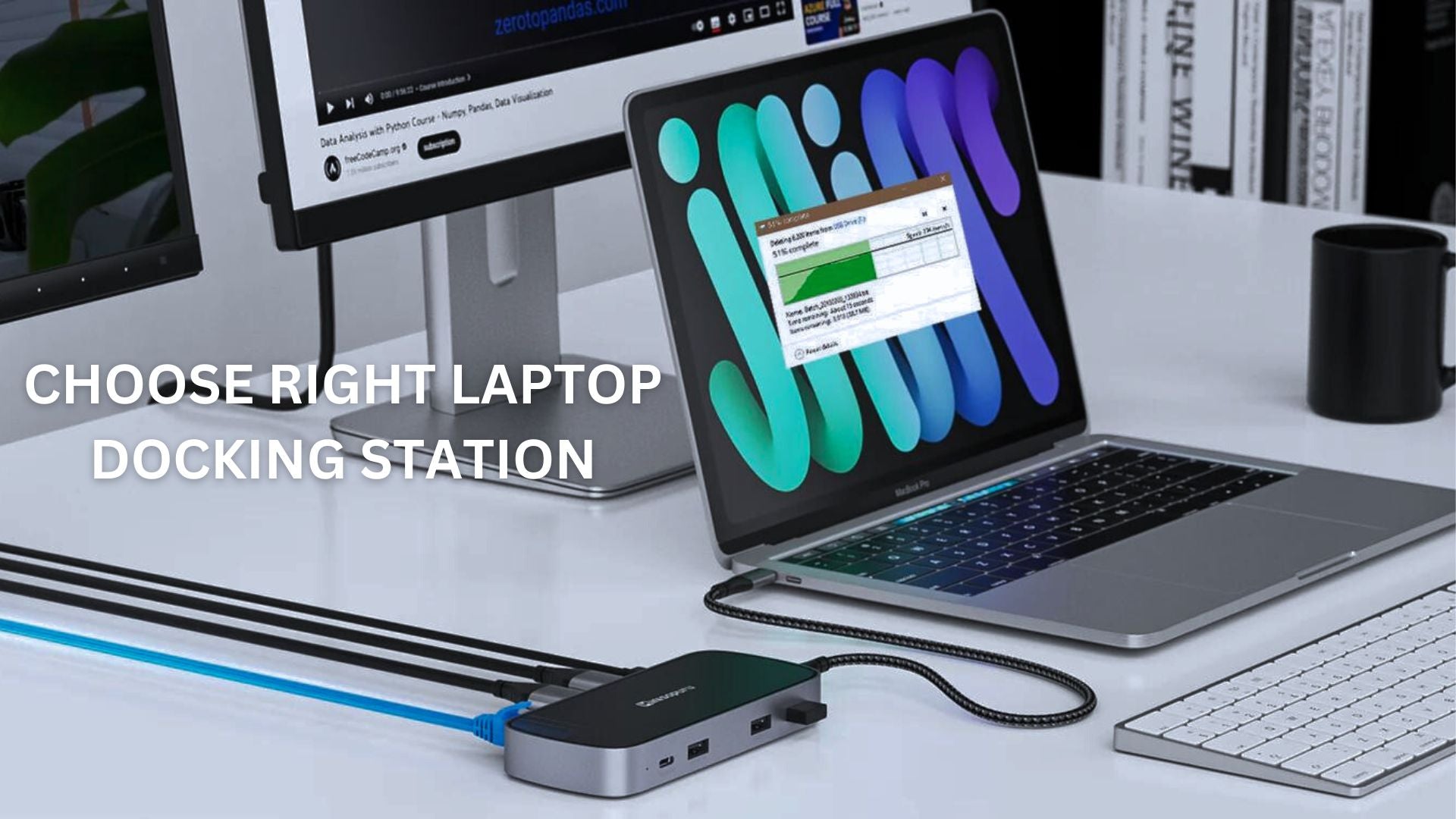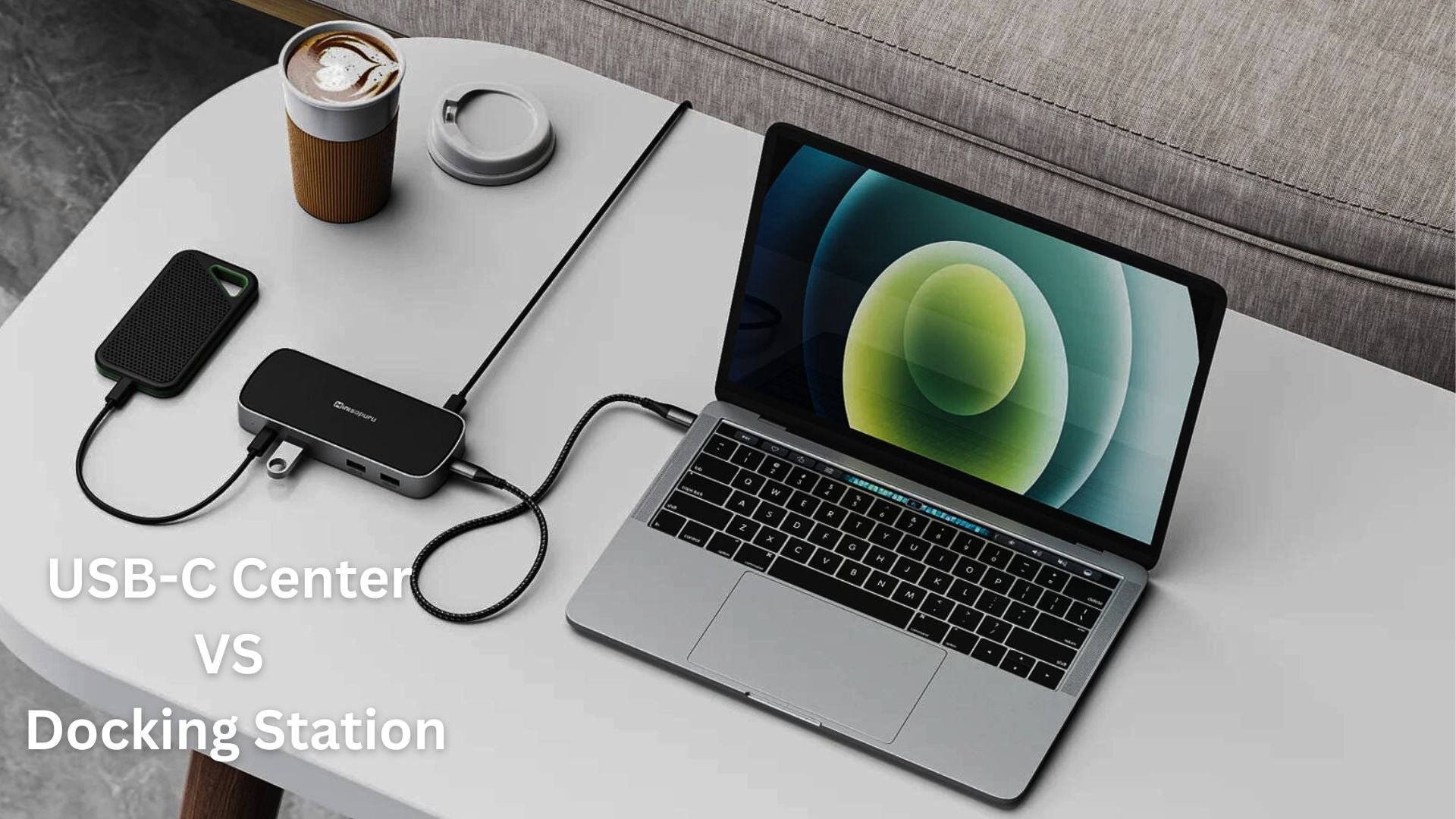Without the need for additional hardware, USB hubs expand the number of USB devices that can be connected to a computer. Additionally, equipment like laptops that cannot physically add more USB ports may benefit from the use of USB hubs.
There are 2 types of USB hubs – powered and unpowered. Between powered and non-powered USB hubs, the former gets its electricity from an outlet while the latter gets it from the computer connection. Keep reading to know more details about them!
What is a USB Hub?
For USB devices, a USB hub functions as an extension lead. You can connect more devices with it plugged into your computer than you can with the USB ports you now have.
Some USB hubs have power, whereas others don't. To help you determine which one you need, this concise overview explains the differences.
2 Types of USB Hubs - powered and unpowered
The fact that one of these USB hubs requires power from your computer while the other does not is the key distinction between them. The electrical system in your house is used to power a powered USB hub.
Your computer's power is used by an unpowered USB hub. These are also known as non-powered USB hubs. A few years ago, desktops and laptops alike had numerous USB ports. Some placed this in convenient locations down the side. Some people place one or more on the back.
The drawback of having connectors on the rear is the possibility of unintentional device unplugging. In this type of setup, organizing the cords is equally challenging.
These days, laptops only have two ports. In some devices, there may not even be a single USB port. You can have more slots available when using a powered or unpowered hub.
Powered USB Hub
An external power supply is used by powered, or active, USB hubs to bring each hub port's energy level to par with an on-system port. Most frequently, a wall outlet is used to power active USB hubs. Active USB hubs nevertheless divide data bandwidth among all connected devices even though they are not required to divide power consumption among all connected devices.
Un-Powered USB Hub
Non-powered, also known as passive, un-powered USB hubs rely solely on the USB port on the computer for power. Unpowered hubs can't operate properly with devices that demand more power than the hub can supply.
A USB flash drive, for instance, might function flawlessly when linked to the computer's USB port or an active hub, but it might not turn on when connected to a passive hub. The power management capabilities of the USB 3.0 standard are better than those of its predecessors, and it may be able to employ greater power devices that hubs using earlier standards can't.
Powered USB Hub vs Unpowered - Where Is the Difference?
1. Power Supply
Powered USB hubs can power many devices simultaneously, can power high-voltage devices, and even generate their own electricity. High-voltage devices cannot be powered by an unpowered USB hub without experiencing performance difficulties.
2. Power Output
Another notable benefit of powered USB hubs is their faster speed compared to a standard USB hub. A powered USB hub can speed up charging and data transfer in addition to running a range of high-power devices more quickly.
3. The number of connectivity ports
Multiple communication ports are supported via powered USB hubs that are powered outside. For instance, 7 or 12-port Anker-powered USB hubs. Therefore, a powered USB hub can have more ports, whereas unpowered USB hubs are typically only capable of having seven ports.
4. Price
Due to the fact that they require an external power supply, powered USB hubs are more expensive than unpowered versions. A powered USB hub costs more, but it is also more dependable because it can deliver up to 2.5 watts per port as opposed to just 500 mA from an unpowered hub.
Benefits of Having a USB Hub
1. Improve Data Sharing
If you need to transmit files between devices, a USB port hub might be useful. Consider going on a road trip with pals and taking numerous pictures with your camera. Your buddies are all prepared to share all the images with you by connecting their portable hard drives to your computer. You could connect the USB hard drives of each of your buddies at once and transfer the images to each of them if you had a USB port hub.
Even some USB port hubs have SD card slots so you can transfer the pictures right from the hub. They wouldn't need to be initially transferred to your computer.
2. Improve the Workstation
Workstation PCs have powerful technology that enables them to run processing-heavy programs like 4K editing and 3D rendering. Digital artists typically need to connect a variety of devices to their computer, including scanners, hard discs, webcams, and other peripherals. A USB port hub might be helpful to have if such gadgets connect via USB, especially if your workstation doesn't have many USB ports.
3. Easy to Gaming
Multiple USB gaming mice, keyboards, and controllers are frequently used by gamers. The best way to connect all of these things to a computer is through a USB hub. Some USB hubs even include functions like high-speed data transfer rates and individual port power control that are intended especially for gaming.
4. Convenient Data Storage
In a confined workspace, a USB port hub can assist you in better managing your USB connections. Consider the scenario where you need to connect a large number of USB devices to your desktop PC. There may not be much space beneath your desk if your tower desktop is positioned there, making it challenging to attach many USB devices to it. Additionally, the connections might not be long enough, particularly if your computer's USB ports are mostly on the back of the tower desktop.
You may give all the connected devices more easily accessible ports by using a USB port hub.
How to Use a USB Hub?
A USB hub is only a device with more USB ports on it. You connect the hub to the USB port on your laptop. The hub can then accept anywhere between two and eight USB devices.
Your laptop may have up to 127 USB devices connected to it at once, which may not seem realistic. All at once, yes. That is one of the secrets of the expandability of the USB port.
- Hubs are not compatible with all devices, including some high-speed hard drives. In that situation, the device needs to be directly hooked into the USB port on the computer. Do not worry; a warning message appears and tells you what to do in such a situation.
- Look out for USB pass-through devices. You can plug one USB device into your laptop and then another USB device into this USB thingamabob since it has an additional USB port on its body. You won't run out of USB ports that way.
- You probably wouldn't want to pack a USB hub in your laptop case. The amount of cords a computer has affects how portable it is.
- There are USB hubs that are laptop-sized and smaller for more portability. They are much more portable than desktop or full-size USB hubs and are quite charming.
Purchasing USB ports on a PC Card is one of the best ways to expand the number of USB ports on your laptop.
FAQs
1. Are USB Hubs a good idea?
One plug can convert a laptop into a full-fledged workstation with a USB dock, while USB hubs can increase the number and type of ports accessible. Having them is a wise decision.
2. Can I use a USB hub to charge multiple devices?
Users can simultaneously charge several devices thanks to USB hubs. For instance, if you use several mobile devices, you can connect them all simultaneously to your laptop. Regular USB hubs only have one drawback: they require electricity from your computer.
3. What is the difference between a USB charger and a USB Hub?
Hubs with USB ports enable you to connect a variety of devices to your computer, while a charging hub, you may simultaneously plug in and charge two or more electronic devices while keeping up with your work. It functions similarly to a device with several USB ports.
4. Do I need a powered USB Hub?
Device power is provided by powered USB hubs on their own. Typically, when you connect a USB device to your computer, the computer's electricity is used to power the USB device. So if you are looking for something like that you can definitely give powered USB hub a try.
5. Why are powered USB Hubs so expensive?
Due to the fact that they require an external power supply, powered USB hubs are more expensive than unpowered versions. A powered USB hub costs more, but it is also more dependable because it can deliver up to 2.5 watts per port as opposed to just 500 mA from an unpowered hub.





1 comment
Ray
I am handicapped & need to operate very low amp electronic devices from my bedside. I can wirelessly turn on/off some – one at a time if I can use a USB hub. I can play recordings from each of several separately powered external hard drives, one at a time. But I want an unpowered USB hub I can turn on and off through my separate switch. I see no reason to use a powered USB hub. Where can I find an unpowered 14 to 16 port USB hub to use only one port at a time?
I am handicapped & need to operate very low amp electronic devices from my bedside. I can wirelessly turn on/off some – one at a time if I can use a USB hub. I can play recordings from each of several separately powered external hard drives, one at a time. But I want an unpowered USB hub I can turn on and off through my separate switch. I see no reason to use a powered USB hub. Where can I find an unpowered 14 to 16 port USB hub to use only one port at a time?